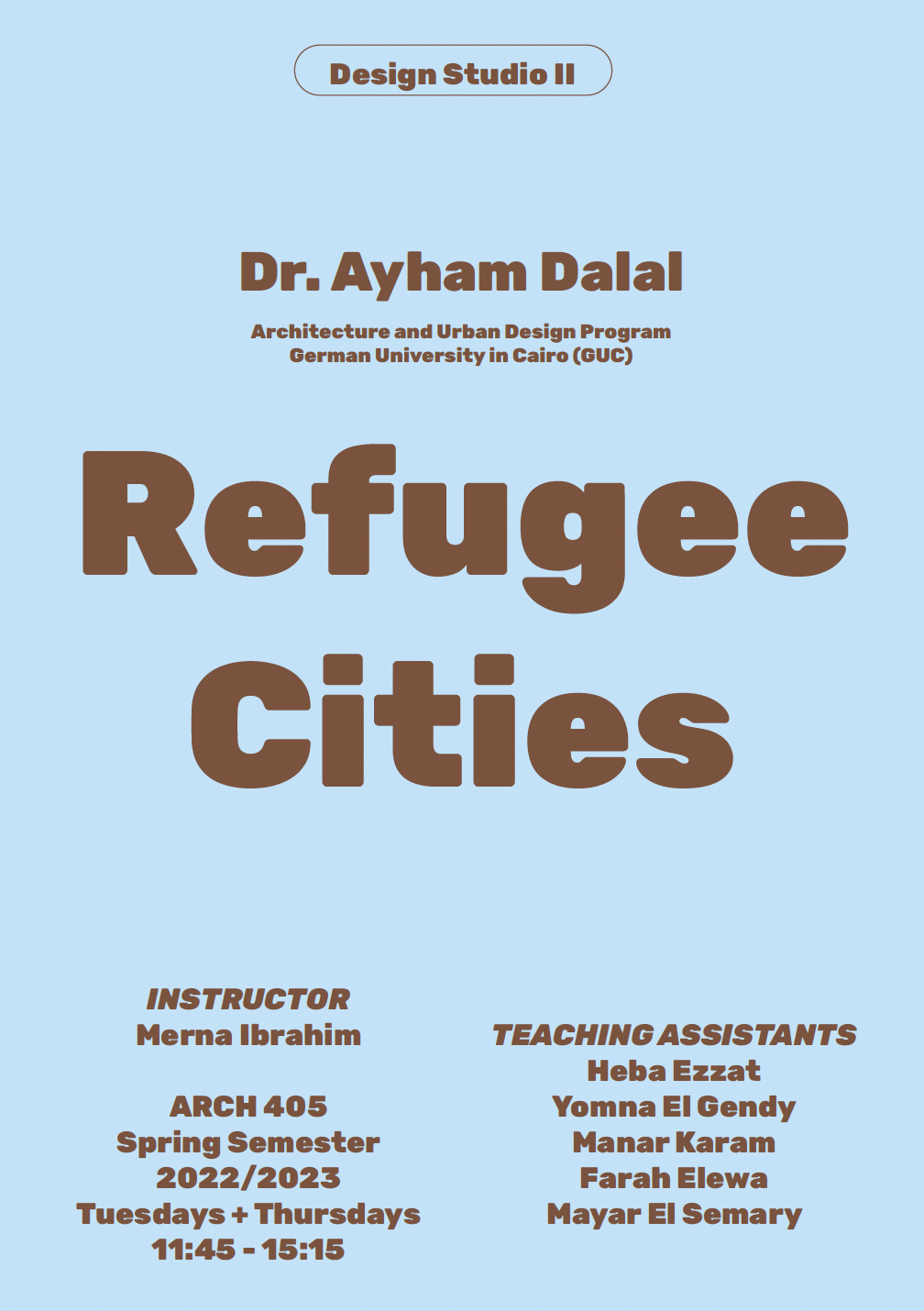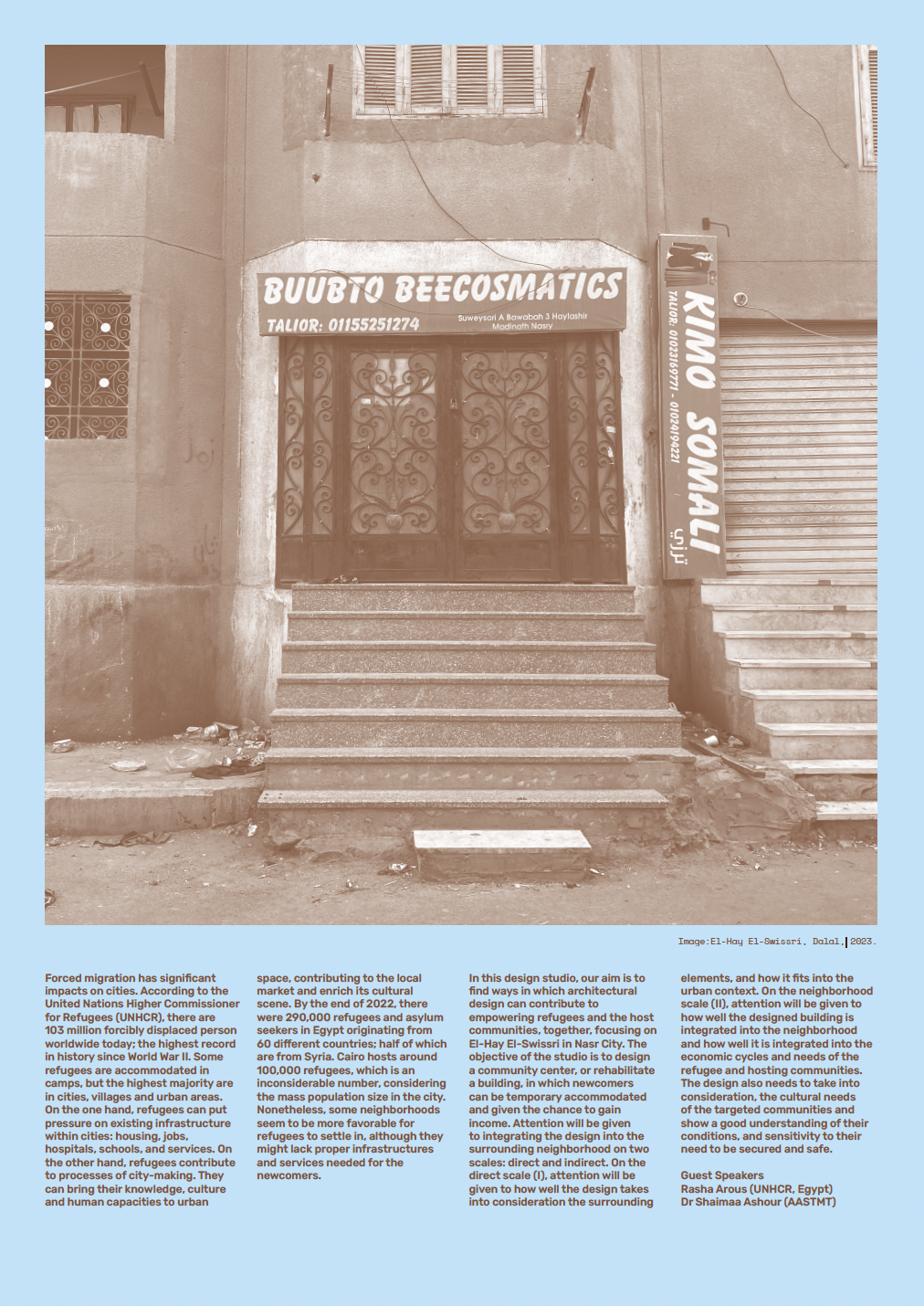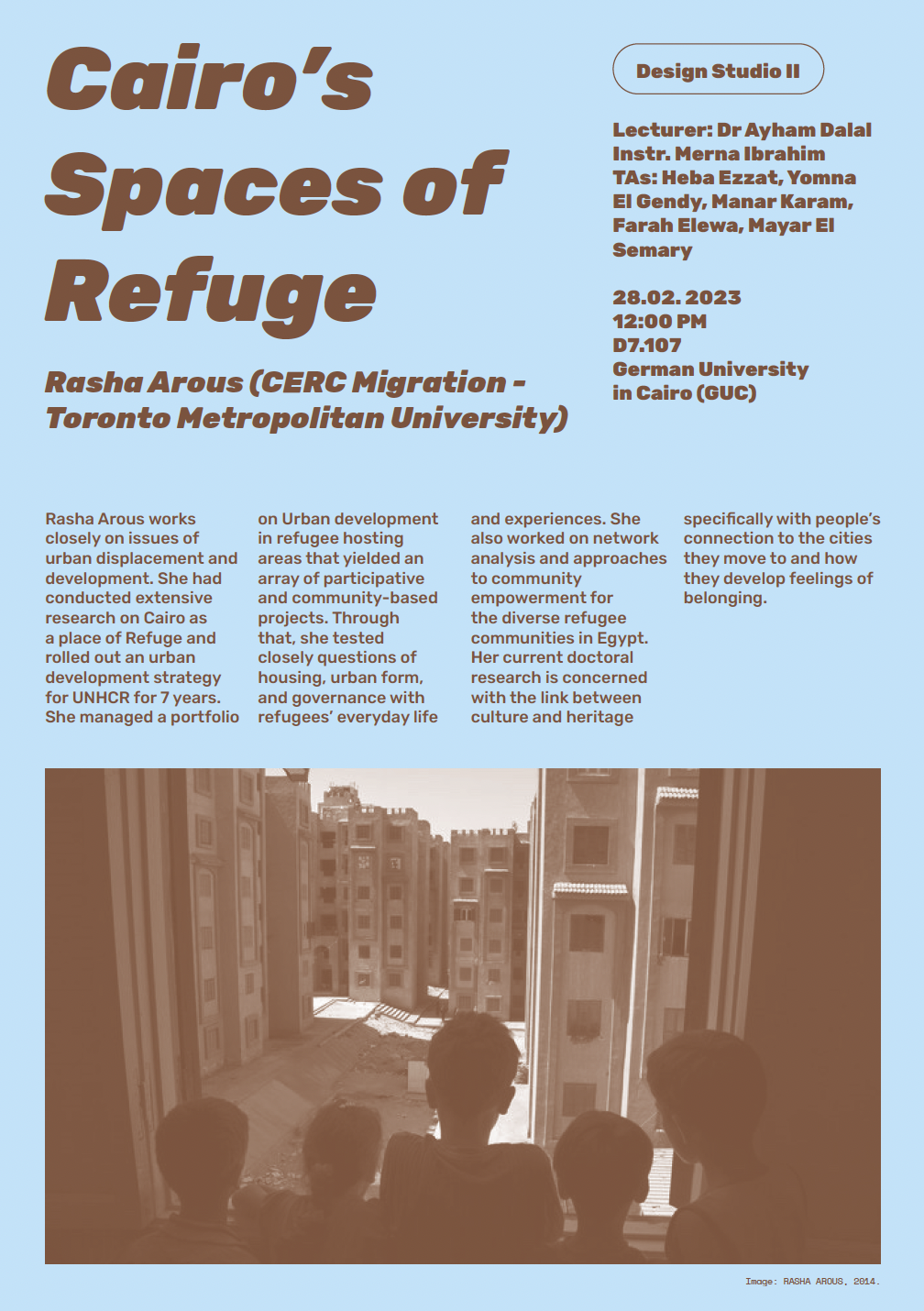Design Studio II: Refugee Cities I
Forced migration has significant impacts on cities. According to the United Nations Higher Commissioner for Refugees (UNHCR), there are 103 million forcibly displaced person worldwide today; the highest record in history since World War II. Some refugees are accommodated in camps, but the highest majority are in cities, villages and urban areas. On the one hand, refugees can put pressure on existing infrastructure within cities: housing, jobs, hospitals, schools, and services. On the other hand, refugees contribute to processes of city-making. They can bring their knowledge, culture and human capacities to urban space, contributing to the local market and enrich its cultural scene. By the end of 2022, there were 290,000 refugees and asylum seekers in Egypt originating from 60 different countries; half of which are from Syria. Cairo hosts around 100,000 refugees, which is an inconsiderable number, considering the mass population size in the city. Nonetheless, some neighborhoods seem to be more favorable for refugees to settle in, although they might lack proper infrastructures and services needed for the newcomers.
In this design studio, our aim is to find ways in which architectural design can contribute to empowering refugees and the host communities, together, focusing on El-Hay El-Swissri in Nasr City. The objective of the studio is to design a community center, or rehabilitate a building, in which newcomers can be temporary accommodated and given the chance to gain income. Attention will be given to integrating the design into the surrounding neighborhood on two scales: direct and indirect. On the direct scale (I), attention will be given to how well the design takes into consideration the surrounding elements, and how it fits into the urban context. On the neighborhood scale (II), attention will be given to how well the designed building is integrated into the neighborhood and how well it is integrated into the economic cycles and needs of the refugee and hosting communities. The design also needs to take into consideration, the cultural needs of the targeted communities and show a good understanding of their conditions, and sensitivity to their need to be secured and safe.
Guest Speakers
Rasha Arous (formerly UNHCR, Egypt)
-
CourseDesign Studio II
-
Student LevelUndergrads (Forth semester)
-
LocationGerman University in Cairo (GUC)



